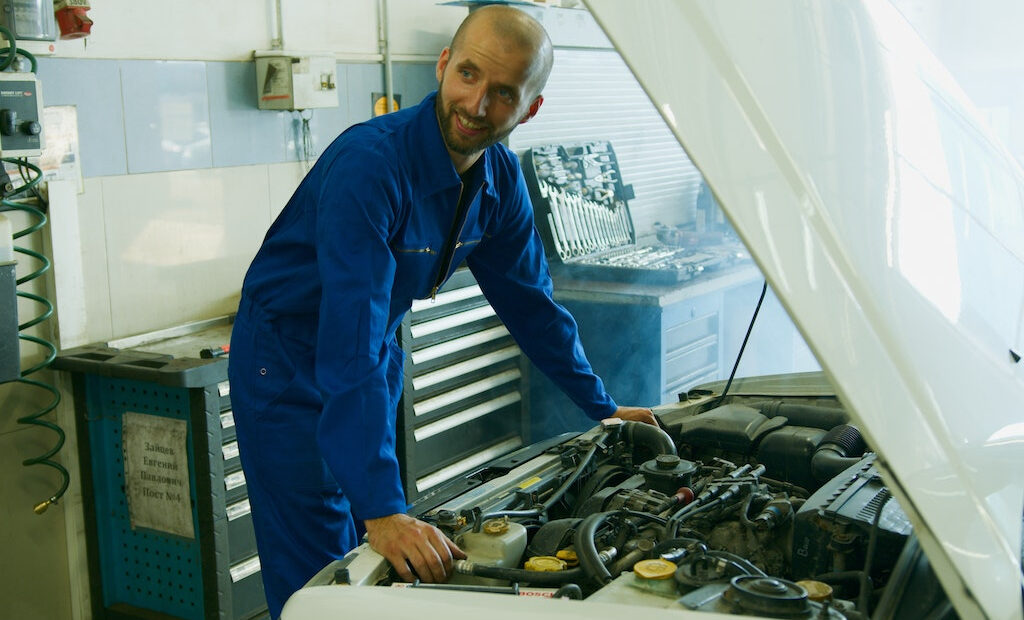Understanding the basics: What is a car alternator and what is its purpose?

A car alternator is a device that converts mechanical energy into electrical energy. It is responsible for charging the battery, powering the car’s electrical systems and providing power to the engine while the car is running. The alternator is an essential component of a vehicle’s electrical system, and its proper functioning is crucial to the overall performance and safety of the vehicle.
How an alternator works
The alternator works by using a rotating magnetic field to generate electricity. It is connected to the engine by a belt, and as the engine runs, it rotates the alternator, which in turn generates electricity. The device’s main components include the rotor, stator, diode and voltage regulator. The rotor is a rotating part that is connected to the engine and generates the magnetic field; the stator is a stationary part that surrounds the rotor and contains the coils of wire that generate the electricity; the diode is a device that converts the alternating current generated by the alternator into direct current, which is what the car’s electrical system requires. The voltage regulator is responsible for controlling the voltage output of the alternator, making sure that it maintains a consistent level of power to the car’s systems.
Photo of the car alternator taken from autodoc.co.uk
Common signs of a faulty alternator
A common sign of a faulty alternator is a dead battery. If the alternator is not functioning properly, it will not be able to charge the battery, and the car will not start. This is one of the most obvious signs of a problem. It is important to have the alternator checked if the battery is dead or not holding charge.
Another sign of a faulty alternator is dimming headlights. If the alternator is not providing enough power to the car’s electrical system, the headlights may appear dim or flicker. This can be especially dangerous when driving at night, as it can make it difficult to see the road ahead.
Flickering dashboard lights are another sign of a problem. If the alternator is not providing enough power to the car’s electrical system, the dashboard lights may not work properly. This can also make it difficult to see important information, such as the speedometer or fuel gauge.
A burning smell coming from the engine can also indicate a problem with the alternator. This smell can be caused by a fault, which can overheat and cause damage to the car’s electrical system. It is important to have the alternator checked if there is a burning smell coming from the engine.
A warning light on the dashboard is also a sign. Many cars have a warning light that indicates a problem with the alternator or the battery. If this light comes on, it is important to have things checked as soon as possible.
Another sign of a failing alternator is a loud or grinding noise coming from the engine. This noise can be caused by a worn or loose belt that is not properly tensioned, which can cause the alternator to work harder and make more noise. This noise can also indicate that the part’s bearings are failing, which can lead to further damage if not addressed.
Replace the alternator
Replacing an alternator is a relatively simple process, but it does require some basic mechanical skills. The first step is to remove the old alternator from the car. This is done by taking out the belt that connects the alternator to the engine, and then unbolting the alternator from its mounting bracket. Once the old alternator is removed, the new one can be installed.
Before installing the new part, it is important to make sure that it is the correct one for the car. The new alternator should have the same voltage rating and amperage rating as the old one. Once the new one is installed, the belt should be reinstalled and properly tensioned. Finally, the new alternator should be tested to make sure that it is working properly.
Conclusion
In conclusion, the alternator is a vital component of a car’s electrical system, converting mechanical energy into electrical energy and maintaining the power of the battery, the electrical systems and the engine while the vehicle is running. A faulty alternator can cause a range of problems, from a dead battery to other failures, and it’s important to have it replaced as soon as possible. The replacement process is relatively simple, but it does require some basic mechanical skills. With the proper knowledge, one can replace an alternator by solo and save money.
The editorial unit
For further information:
https://www.autodoc.co.uk/info/alternator-replacement-how-much-does-it-cost-and-how-long-does-it-take
https://carservicesinreading.co.uk/blogs/factors-resulting-in-alternator-failure-to-charge-the-battery

























Facebook
Twitter
Instagram
YouTube
RSS